Hisense proves here that it can deliver products of really decent quality. The Hisense U7NQ is a television that offers many advantages, with its picture quality being one of its main assets. Thanks to Mini LED technology, this television offers deep blacks and high brightness, positively influencing contrast and image dynamics. Dolby Vision support further increases the capabilities of this model, providing cinematic experiences at home. When it comes to motion smoothness, the Hisense U7NQ is a great choice for gamers and those who appreciate dynamic content, such as sports. The rapid 144 Hz panel, low input lag, and additional features like VRR, ALLM, and Game Bar make gameplay on this television smooth and responsive. For daily usage, the television deserves praise for its high efficiency during the day. The high brightness level of 915 cd/m² means that the television performs well even in bright rooms, and additional features like the ability to record programs make it a very functional everyday choice. Despite all its advantages, the Hisense U7NQ also has its drawbacks. The VIDAA operating system, while fast, is not yet as developed as other platforms available on the market, resulting in the absence of several popular applications such as Spotify or Tidal. Gamers may be disappointed by the lack of support for HGiG, which affects the optimal reproduction of details in HDR games. If we plan to connect the television to a computer, we must reckon with issues related to font readability, especially on dark backgrounds. The Hisense U7NQ is a solid TV that offers very good picture quality and rich features for gamers. Despite a few shortcomings, it is a model that will satisfy most users, providing high picture quality, motion smoothness, and useful user features.
- Matching (Score)
- Our verdict
- TV appearance
- Where to buy
- Contrast and black detail
- HDR effect quality
- Factory color reproduction
- Color reproduction after calibration
- Smoothness of tonal transitions
- Image scaling and smoothness of tonal transitions
- Blur and motion smoothness
- Console compatibility and gaming features
- Input lag
- Compatibility with PC
- Viewing angles
- TV efficiency during daytime
- Details about the matrix
- TV features
- Apps
- Playing files from USB
- Sound
Hisense U7NQ vs TCL C6K
Direct compare
Check the best price offer:
Hisense U7NQU7NQ
C6K / C69K / Q6C


Panel type: LCD VA
Resolution: 3840x2160
System: VIDAA
Model year: 2024
Complete the survey to find out the result

Panel type: LCD VA
Resolution: 3840x2160
System: Google TV
Model year: 2025
Complete the survey to find out the result

Overall rating
7.3
7.1
Movies and series in UHD quality
7.0
6.7
Classic TV, YouTube
6.7
6.6
Sports broadcasts (TV and apps)
6.4
6.3
Gaming on console
8.2
8.4
TV as a computer monitor
8.0
8.6
Watching in bright light
7.6
6.4
Utility functions
9.0
7.0
Apps
7.7
9.6
Sound quality
6.9
6.5
Complete the survey to find out what fits your preferences
Advantages
Good contrast
High brightness of the panel - good performance during the day
Very good for gamers, sports - VRR, ALLM 144Hz
Low input lag
Recording function from built-in tuners
Very good contrast and black level: VA panel and MINI-LED backlighting
Good motion fluidity: High refresh rate of 144Hz
Decent panel brightness
Many features for gamers: VRR, ALLM, HDMI 2.1, HGiG
Additional mode for PC gamers: 240Hz
Google TV system with a wide selection of apps
Support for multiple HDR formats including Dolby Vision
Support for Dolby Atmos and DTS
Very attractive price
Disadvantages
Not the best Image scaling and smoothness of tonal transitions
Managing the backlighting could be better
Language errors in the system
Our verdict
The TCL C6K is a television for those who want to combine gaming and watching movies with good contrast, without spending a fortune. Thanks to the VA panel with Mini-LED backlighting, blacks are deep and contrast is high, so evening screenings look truly spectacular. Additionally, it offers decent brightness, which, combined with Dolby Vision, makes movies take on a cinematic character. The fluidity of the image is also significant – the 144Hz refresh rate does wonders for sports and dynamic games, and gamers get a full package of extras: VRR, ALLM, HDMI 2.1, HGiG, and even a 240 Hz mode in PC. On a daily basis, the television is powered by Google TV, which offers a ton of apps and the Gemini AI voice assistant, making operation convenient and flexible. It's also worth mentioning the sound – support for Dolby Atmos and DTS gives the impression that the equipment is ready not just for gaming. As is often the case, there are a few things that could be improved. The backlighting in difficult scenes can lose details or wash out blacks, and Polish translations in the menu can be so clumsy that one has to wonder what they actually mean. Despite this, the overall performance holds up very well, and given the price, the TCL C6K could be one of the more interesting choices for someone looking for a versatile television for movies, sports, and games. Especially when a good promotion comes along – and when TCL traditionally polishes up the details in updates.
TV appearance




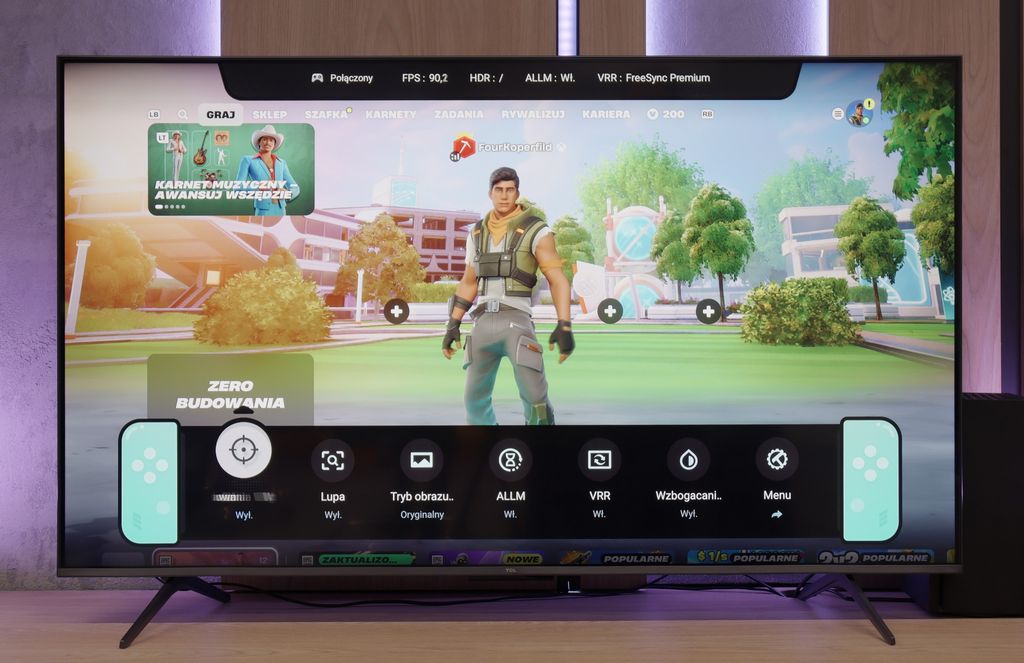
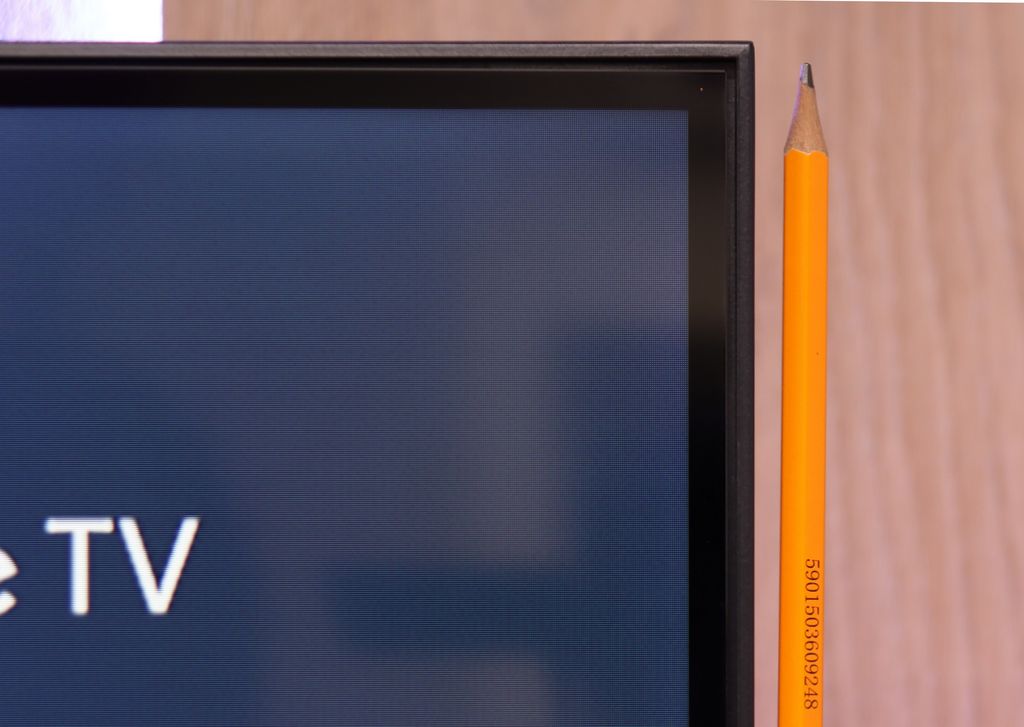
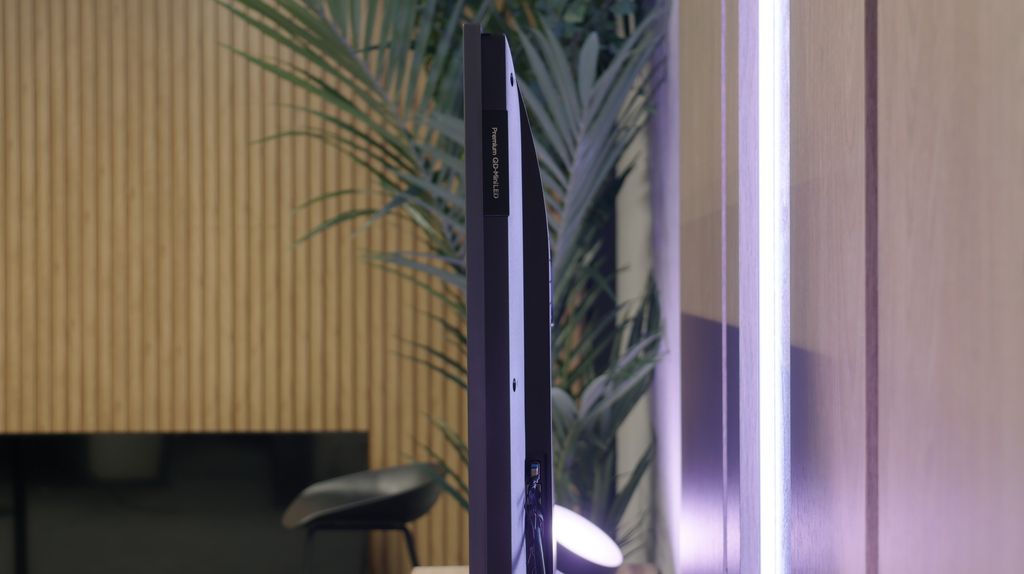
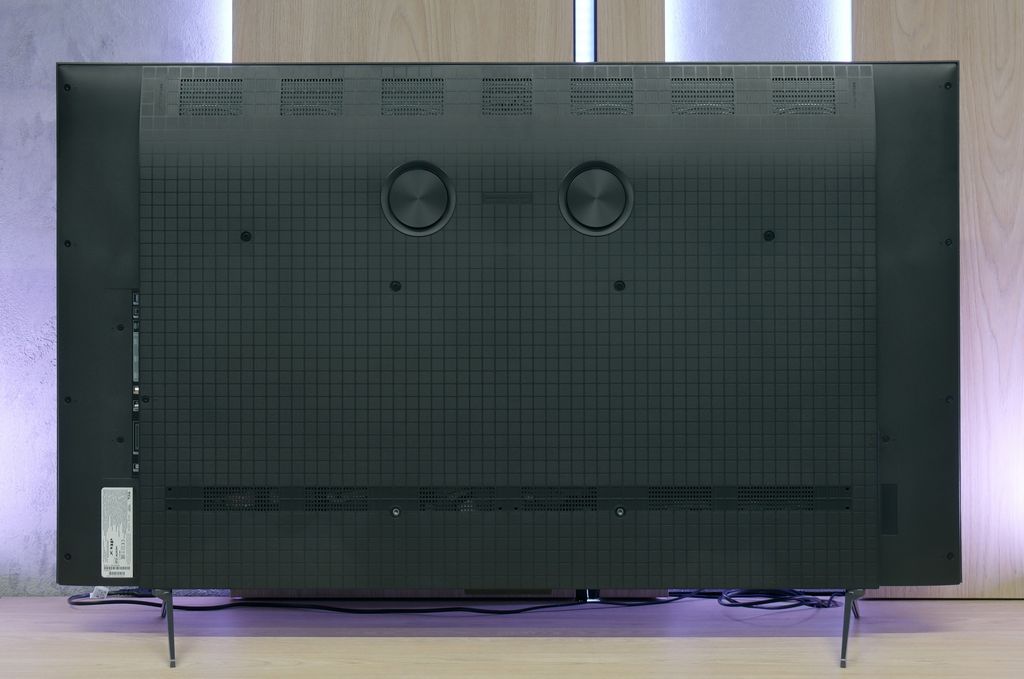
Contrast and black detail
7.2/10
7.3/10
Local dimming function: Yes, number of zones: 713 (31 x 23)
Local dimming function: Yes, number of zones: 180 (10 x 18)
Contrast:

Result
40,750:1

Result
42,600:1

Result
12,000:1

Result
12,150:1

Result
3,450:1

Result
114,000:1

Result
17,300:1

Result
16,200:1

Result
9,900:1

Result
4,850:1
Halo effect and black detail visibility:

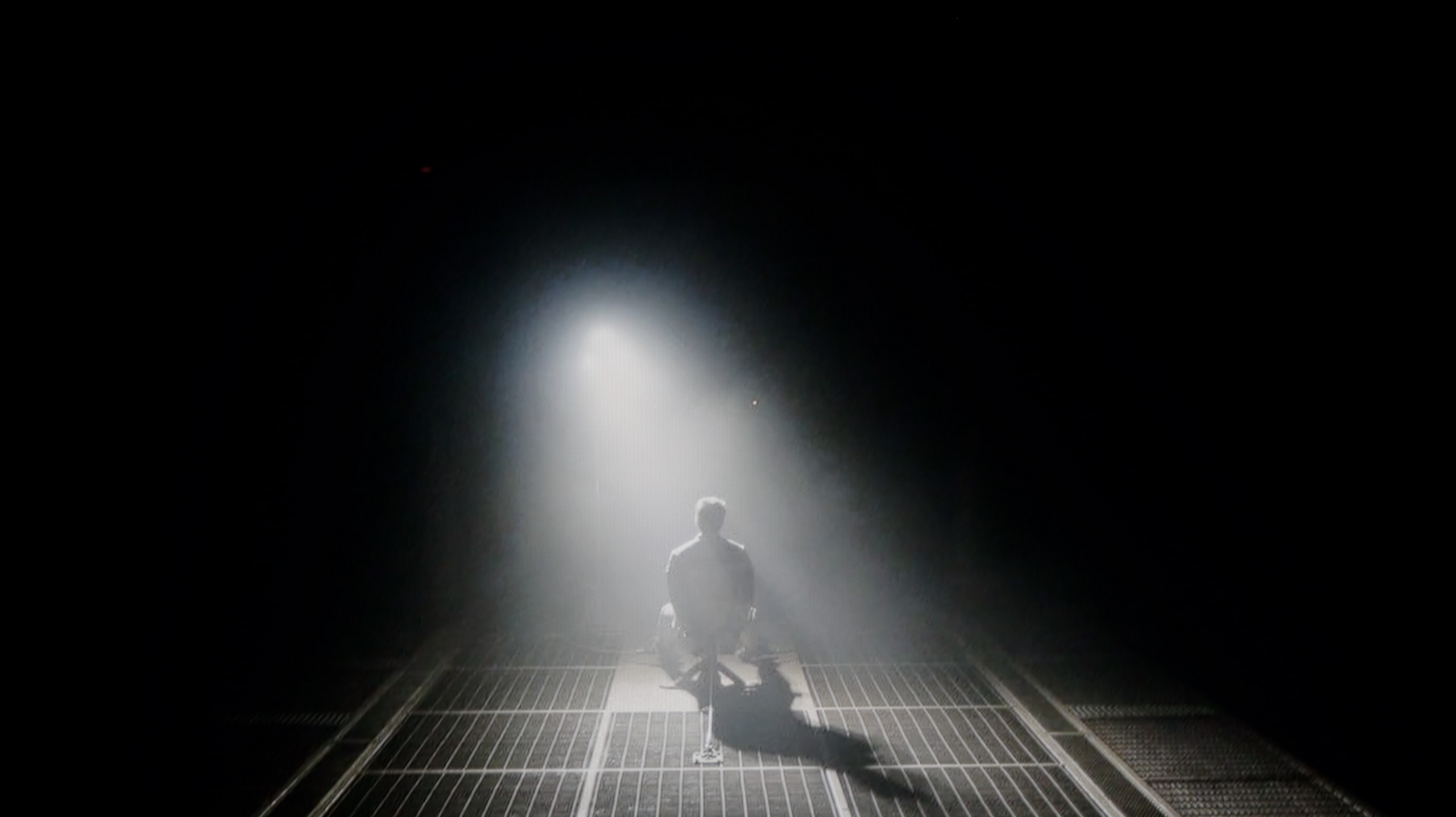
Hisense U7NQ is a television that uses a VA panel, crucial for achieving good contrast and appropriate black depth. This technology translates into vivid image quality when watching content in a dark room, where blacks acquire proper saturation and resemble deep tar rather than washed-out ash. Moreover, the TV features Mini LED backlighting, which in the tested 65-inch variant offers an impressive number of 713 local dimming zones. Naturally, smaller sizes will have fewer zones, while larger ones will have more, positively affecting overall contrast.
Under very favourable conditions, the TV achieves a contrast ratio of around 40,000:1. The local dimming technology performs excellently at managing bright and dark parts of the image, making the TV superbly render details in complex scenes. Despite the large number of zones, there may be issues with contrast in particularly demanding scenes, where small bright elements appear against a dark background. Sometimes the TV may dim these elements too much, causing a loss of brightness, and other times it excessively brightens them, leading to a halo effect—glows of light surrounding objects. This effect can be noticeable, for example, in a scene from the movie Sicario 2, where bright glows around the subtitles can be bothersome.
Nevertheless, the use of Mini LED technology with local dimming makes the overall image quality significantly better than in televisions without this technology. The effect is particularly noticeable when watching movies in a dark room—the blacks are deeper, and the contrast is more pronounced, allowing a full appreciation of details hidden in dark shots.
The TCL C6K is based on a VA matrix, more specifically HVA produced by TCL CSOT, which already provides a solid native contrast of 6000–7000:1 without the use of local dimming. However, the real strength of this model is the Mini-LED backlighting with the ability to dim individual zones. In the tested 55-inch version, we counted about 180 of them, and as the diagonal increases, this number naturally rises. For a television in this price segment, the contrast is truly impressive. In simpler film scenes, such as excerpts from "Oblivion," it performs excellently, and shots completely filled with black make a great impression. Of course, due to the nature of Mini-LED technology, it’s not always possible to avoid issues – in more challenging frames with many bright details, halo effects or too strong dimming of some elements appear (regardless of local dimming settings). Nevertheless, the contrast can be considered a strong point of the C6K.
HDR effect quality
5.9/10
4.9/10
Luminance measurements in HDR:

Result
1023 nit

Result
290 nit

Result
637 nit

Result
198 nit

Result
907 nit

Result
612 nit

Result
202 nit

Result
424 nit

Result
144 nit

Result
587 nit
Scene from the movie “Pan” (about 2800 nits)


Scene from the movie “Billy Lynn” (about 1100 nits)


Static HDR10


Dynamic: Dolby Vision
Dynamic: Dolby Vision


HDR luminance chart:
TCL C6K
Luminancja HDR
Luminance of RGB colors
Hisense U7NQ
Luminancja HDR
Luminance of RGB colors
The Hisense U7NQ 65 television demonstrated significant capabilities on the luminance chart, exceeding the 1000-nit barrier and achieving very high brightness results without issue in the first, third, and fifth test scenes. However, as before, in the second and fourth test scenes, for example from the film Sicario 2, there are significant problems with maintaining brightness, and the results around 200 nits are very disappointing. Despite a large number of dimming zones, the algorithm in the television responsible for controlling these zones is unable to react appropriately — in this case, it significantly dims small elements like the moon or the light from a helicopter. The bright light that should blind us is too dim to be called an HDR effect. Nevertheless, it is worth praising the television for its high coverage of the DCI-P3 colour gamut at 96%, which allows it to accurately reproduce most film scenes.
TCL C6K is a moderately bright TV that can showcase its full potential under the best cinematic conditions – the maximum brightness is around 600 nits. In scenes with large, intense light sources, the HDR effect can be really satisfying, providing a sense of cinematic brilliance. However, it should be noted that when managing the backlighting zones, there are situations where some elements become dimmed and sometimes can even become barely visible. It is clear that there is a lack of proper algorithm optimization here, although looking at the technical parameters in this price range, the design itself performs very well.
Factory color reproduction
6.4/10
5/10


Factory Mode
After calibration


Factory Mode
After calibration
The Chinese manufacturer offers various picture settings with its televisions, but the best mode in this model is undoubtedly the Filmmaker Mode. Despite its name, this mode has its issues: the white balance, although roughly correct, is characterized by a strong dominance of warm tones due to the kick of red colour, both in 4K and HD materials. The Colour Checker test confirms these errors — deviations in samples are visible in inappropriate shades. As for the brightness characteristics, the gamma responsible for HD materials shows values below 2.4, leading to some brightening of the screen. Meanwhile, the EOTF curve shows the television's problems with displaying small light elements, as confirmed by the previously described paragraphs.
This year's TCL televisions feature a Filmmaker mode, and it must be admitted that it is definitely the best choice straight out of the box. This is the mode we recommend for everyday watching of movies and series. Unfortunately, as is often the case, the best doesn't mean perfect. In the case of SDR content, the image was too warm because the red was strongly emphasized in the white balance. On the other hand, with HDR content, we had the opposite impression – the image became cooler than it should have been due to excess blue. Additionally, the brightness characteristic sometimes led to highlights being blown out. In practice, this resulted in quite noticeable color test inaccuracies that are hard to accept in a mode advertised as "by the creators."
Color reproduction after calibration
7.8/10
7.5/10




Hisense televisions offer many tools for image correction, allowing users to adjust settings to their preferences. Therefore, we decided to utilize these capabilities to bring the image quality closer to reference standards. In the case of white balance, we managed to eliminate the dominance of red, resulting in more neutral colours, which allowed for a more realistic image in both 4K and HD materials. A similar improvement was noticed in the brightness characteristics. Gamma, which previously led to excessive screen brightness, was corrected, contributing to better detail representation in the darker areas of the image while maintaining a natural tonal balance.
However, the biggest challenge was the calibration of the EOTF curve, which is responsible for brightness in 4K materials. At first glance, the EOTF value appeared almost perfect, but detailed tests showed a slightly different outcome. Upon closer inspection—especially using the filter on the right side of the EOTF chart—we noticed how the television manipulated 4K film materials, often significantly boosting brightness. This effect was particularly noticeable in scenes from films such as Pan and Billy Lynn, where the television attempted to artificially increase the brightness of elements, affecting their naturalness. Despite these imperfections, the calibration yielded positive results, especially in terms of tonal improvement. For most users, the final effect should be satisfactory, especially if they aim to bring image quality closer to professional reference standards.
Thanks to the white balance correction, it was possible to significantly reduce the C6K's tendency to distort colors, which resulted in a very good final outcome. After calibration, we will no longer observe the effect of excessive warming of scenes in SDR or overly cooling the image in HDR. However, it is worth taking a closer look at the brightness characteristics. In SDR content, there are few complaints – the image looks really good, especially in older movies, TV shows, or materials from YouTube. This is much worse for HDR content. Analysis of the EOTF curve suggests that everything is fine, but in practice (EOTF in films), the limitations of the construction become apparent. The TV tends to overly brighten the smallest parts of the frame, and in other situations, it can dim the entire scene too much. The effect of calibration is therefore evident, and in terms of color, the C6K has gained quite a lot, but certain limitations arising from local dimming and, in fact, its management by the C6K simply cannot be overcome.
Smoothness of tonal transitions
9.1/10
9.5/10












Hisense U7NQ offers excellent fluidity of tonal transitions. Overall, the image is very well balanced, and transitions between different shades of colors are nearly flawless. For more discerning viewers, small joinings in darker hues can be detected; however, these imperfections are minimal and do not significantly affect the overall picture quality. Tonal fluidity is at a very high level, making viewing content on this television particularly enjoyable, with no noticeable problems with gradients and color transitions.
The transitions between colors in the C6K are very smooth, and it's hard to find any banding. The image looks natural, and any minor imperfections can only be noticed on bright test patterns – and that with really careful viewing. In everyday use, the effect is simply great, and one can confidently say that in this category, the C6K performs exceptionally well.
Image scaling and smoothness of tonal transitions
5.5/10
5/10
Smooth transition function

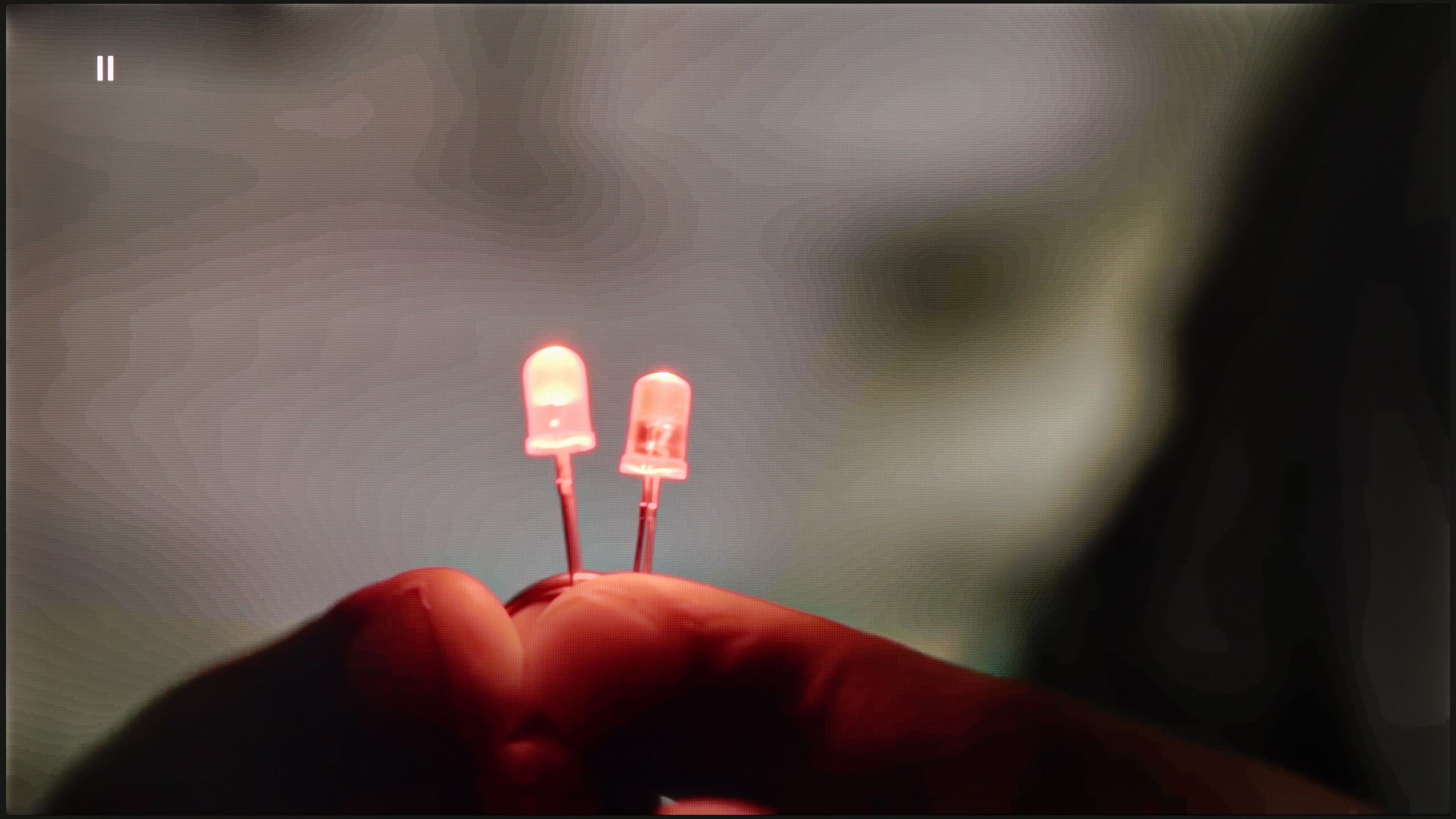
Image without overscan on the SD signal


When it comes to smoothing tonal transitions, despite the presence of the "Smooth and Gradient Image" feature in the test sequence, we did not notice that the feature added anything — we recommend turning it off. As for upscaling, the television handled our model well, and the branches in the background are not excessively jagged — the image seems quite plastic. However, it was slightly cropped by the so-called overscan.
The TCL C6K performs quite well in terms of scaling. Lower quality materials look acceptable, and the lack of overscan issues means that the image is displayed in full, without cropping. However, one cannot expect miracles – content of very low quality will not gain new life here, as the image processor has its limitations. On thin lines or details, the characteristic tearing is visible, which reveals the absence of advanced image enhancement algorithms. It is also a pity that the C6K lacks the feature for smoothing tonal transitions – in older films or video materials, color banding can be noticeable and may be bothersome during long viewing sessions.
Blur and motion smoothness
7.3/10
7.3/10

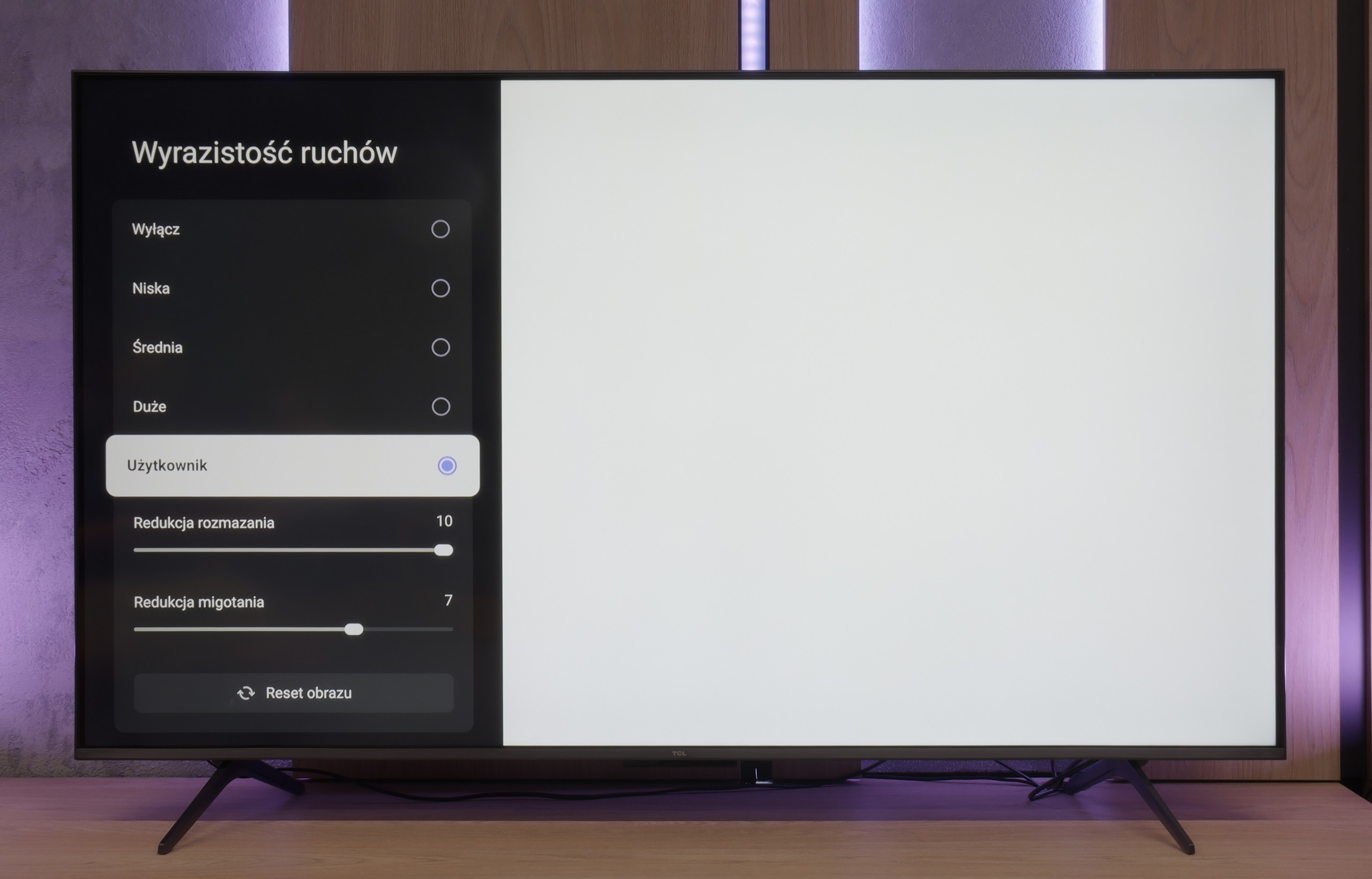
Blur (native resolution, maximum refresh rate):






Blur (BFI function enabled):






Hisense U7NQ has a refresh rate of 144 Hz, which definitely contributes to smooth motion. For movie enthusiasts, there are two features available: judder reduction and motion blur reduction. The judder reduction feature minimizes the effect of so-called judder, which is the unpleasant stuttering of the image, particularly noticeable at lower frame rates. On the other hand, motion blur reduction helps sharpen fast-moving objects, which is useful when watching dynamic action scenes.
As for motion blur, the TV has a decent response time, so excessive blurriness is not visible, except in specific situations, such as the test with the little green alien on a dark background. In such cases, slight artifacts may appear, but overall, the TV handles dynamic images well, providing satisfactory motion quality.
TCL C6K features a 144 Hz panel, which is a significant advantage in this price range. This is an important step forward compared to the previous model C655 PRO, which offered only 60 Hz at 4K. The difference is especially noticeable when watching sports or playing games – the ball, athletes, or fast action in a game are displayed more clearly and without losing details. An interesting fact is also the ability of the panel to operate at 240 Hz, which the manufacturer does not mention in official materials. We will return to this topic when discussing the game mode for PC.
TCL also added a feature for movie watchers: "Motion Clarity," which allows you to adjust the image to your preferences using two simple sliders. You can keep the movie frame visible or opt for a very smooth, almost theatrical effect. This way, everyone can find settings tailored to their taste.
Console compatibility and gaming features
8.5/10
9.8/10
- ALLM
- VRR
- VRR range48 - 144Hz48 - 240Hz
- Dolby Vision Game Mode
- Correct implementation of HGIG
- 1080p@120Hz
- 1440p@120Hz
- 4K@120Hz
- Game bar

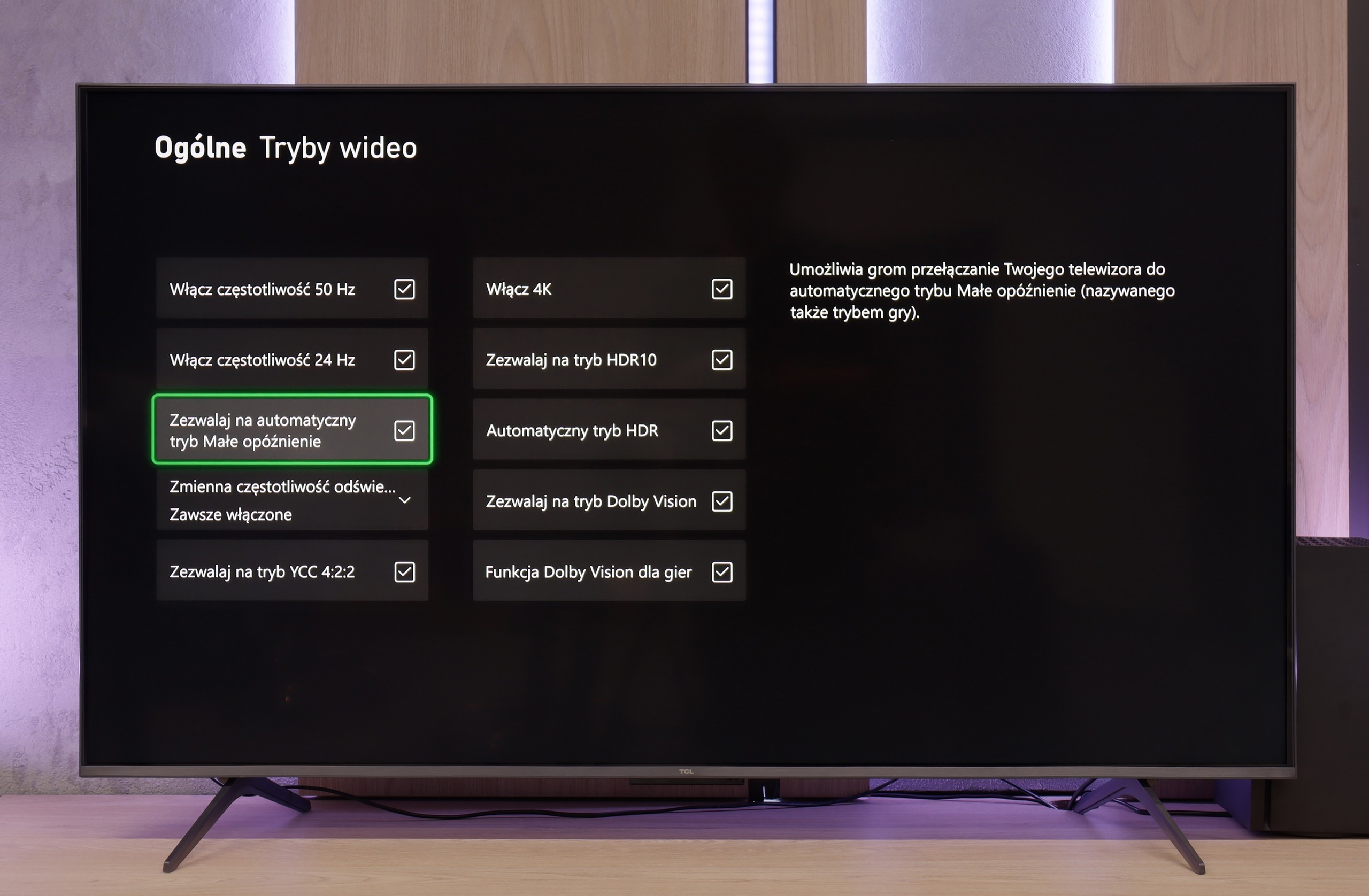

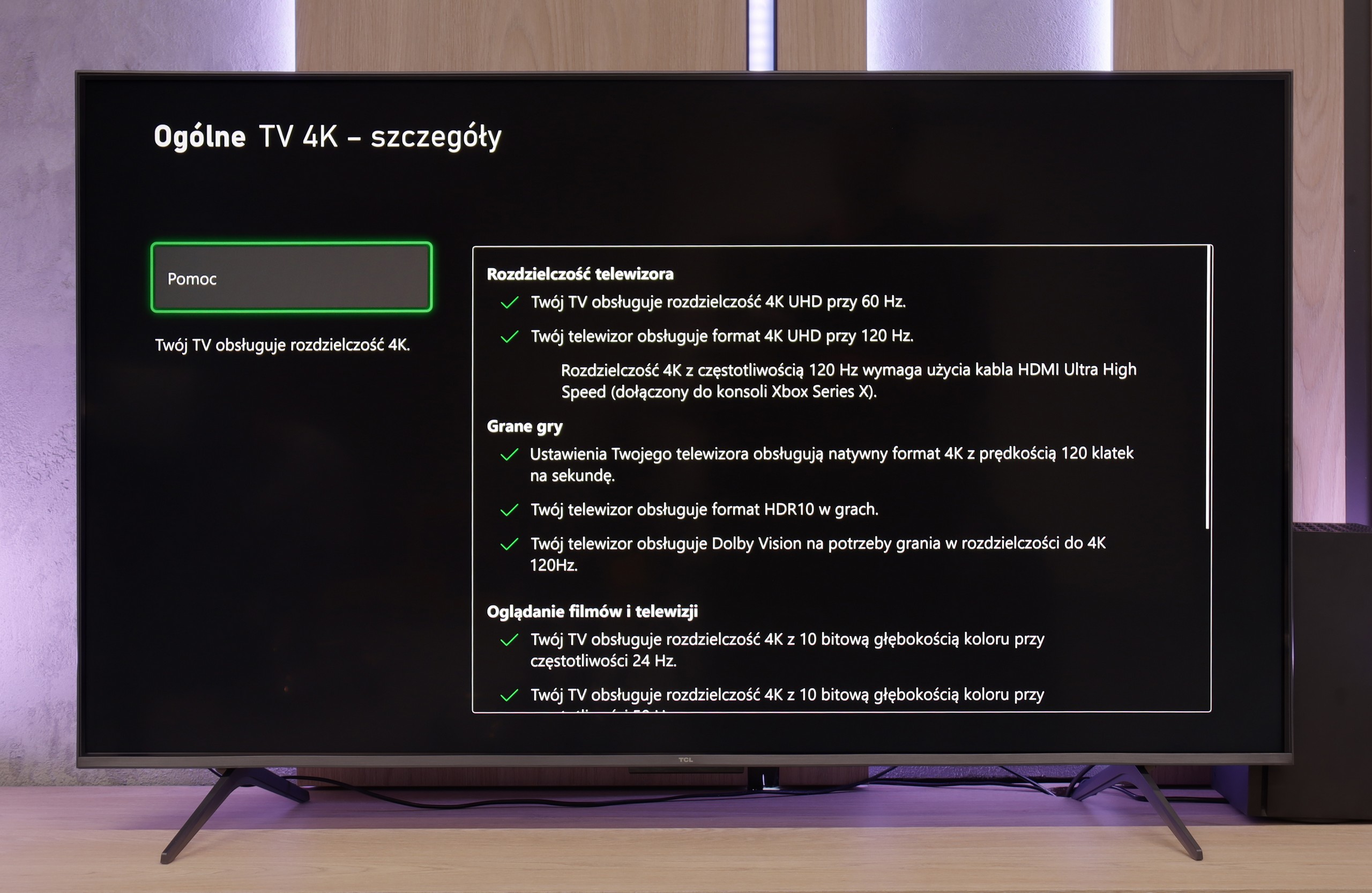

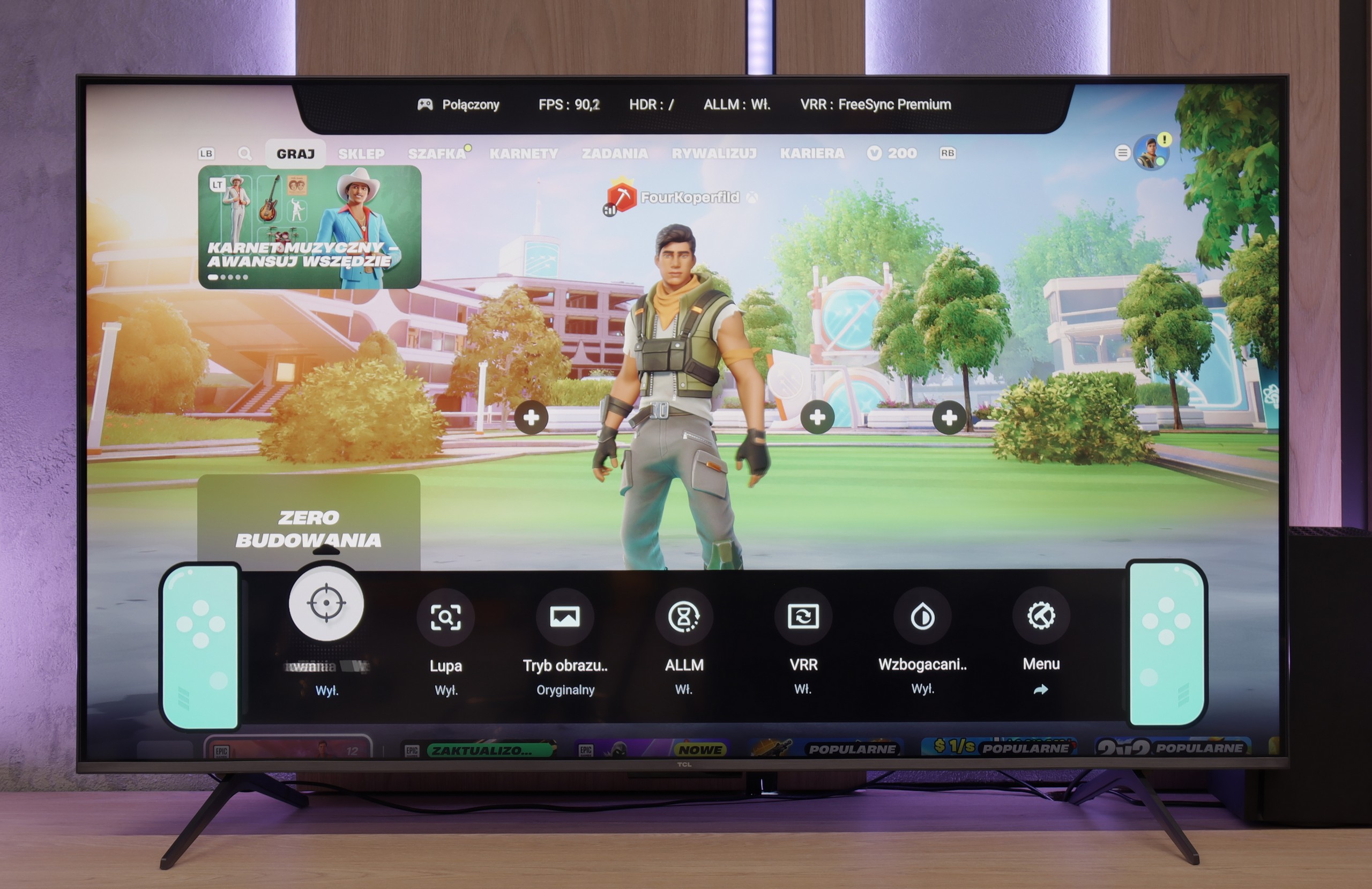


Hisense U7NQ offers everything a gamer might need for comfortable gameplay. The TV supports a refresh rate of 144 Hz, providing an incredibly smooth image, especially in dynamic action games. The VRR (Variable Refresh Rate) feature ensures that the image adapts to changing frames per second, eliminating stuttering and tearing. Additionally, there is an ALLM (Auto Low Latency Mode) feature that automatically switches the TV to game mode, minimizing input lag.
The TV also supports Dolby Vision, which is particularly important for gamers who value high contrast and vivid colors in games that support this format. The Hisense U7NQ also has a Game Bar feature that allows quick access to essential settings during gameplay, as well as support for G-Sync technology, which further reduces image tearing.
Unfortunately, despite the wide range of features, support for the most popular HDR format in gaming — HGiG — is lacking. This may be disappointing for gamers who expect optimal detail representation in HDR scenes. Nevertheless, the remaining features make the Hisense U7NQ a solid choice for any console gaming enthusiast.
The TCL C6K is a TV that can confidently be called equipment designed for gamers. Here we have 4K at 144 Hz, VRR support, automatic game mode (ALLM), and Dolby Vision Gaming. Additionally, there's a practical Game Bar, a panel with the most important settings readily available – useful when we want to quickly change something during gameplay (e.g., screen aspect ratio: Yes, that’s possible!). The wide VRR range, reaching up to 240 Hz, deserves attention. However, this is mainly an option for PC gamers who drop below the native 4K resolution. Then the TV can spread its wings and show additional smoothness, especially in fast-paced e-sports titles. In the case of consoles, we stick to the classic limit of 120 Hz, but the possibilities are still quite broad. The only drawback is a slight ghosting that can sometimes be seen in dynamic scenes. Other than that, the C6K offers everything gamers expect from a TV.
Input lag
9.8/10
9.7/10
SDR
HDR
Dolby Vision
Input lag on the Hisense U7NQ is at a remarkable level, with a maximum of 16 ms, which is an excellent result even in Dolby Vision mode. This achievement is worth highlighting, as Dolby Vision mode often increases delays in other TV models, but here it has been avoided. Thanks to the low input lag, gameplay is smooth and responsive, which will be appreciated by both casual gamers and more advanced users.
In terms of input lag, the TCL C6K performs excellently. With 120 Hz content, the delay is around 10 ms, and at times even less. This is a level at which the response is practically instantaneous, and it's hard to find any objections. For 60 Hz materials, the result is about 18 ms – still a very good result, more than sufficient for comfortable gaming.
Compatibility with PC
8/10
8.6/10

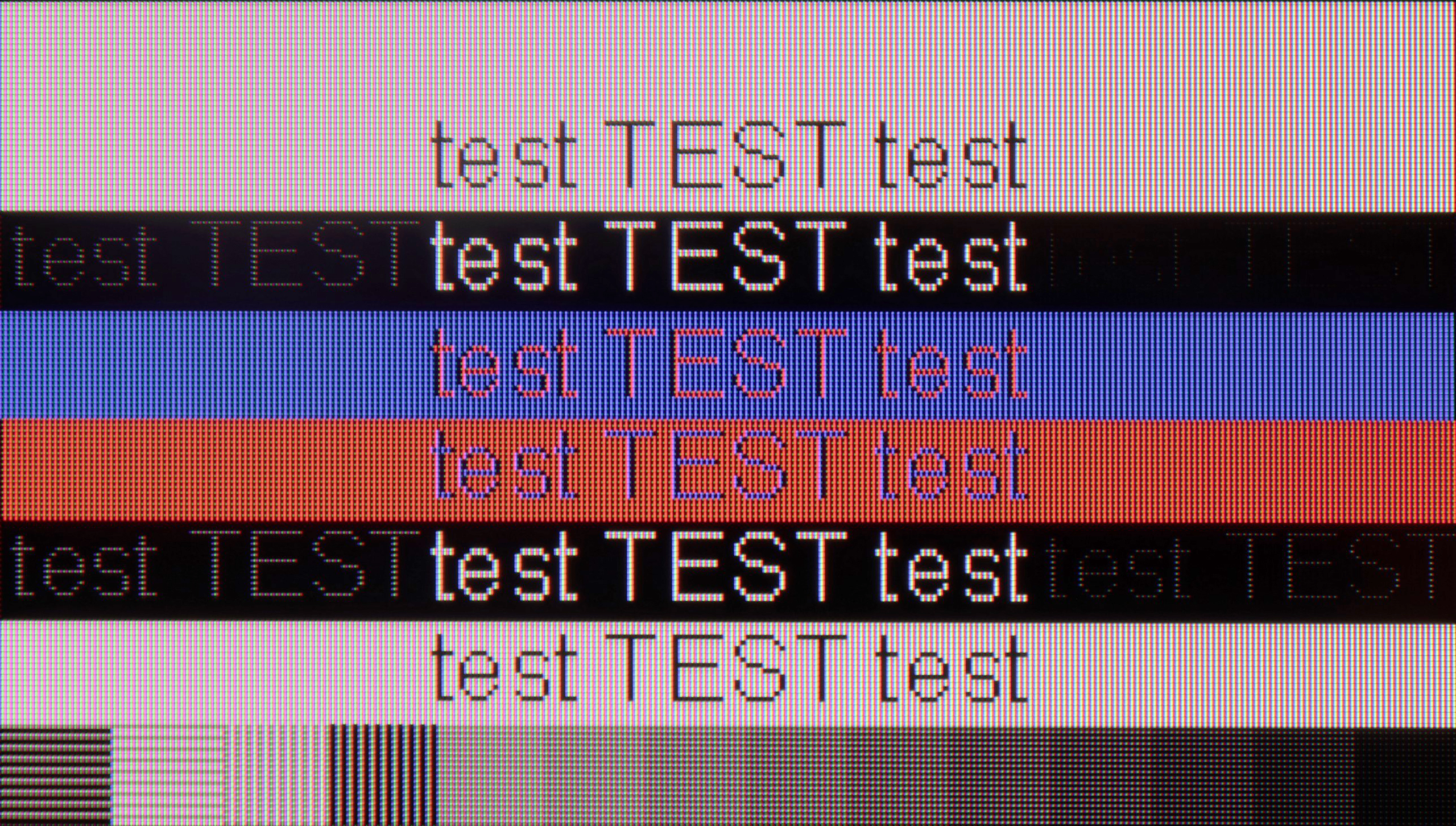
Hisense U7NQ offers full support for chroma 4:4:4, which ensures good font readability, especially when working with text. Overall, the image quality and visibility of characters are at a satisfactory level. However, it is worth noting the issue related to displaying fonts on a dark background — in this situation, the letters become practically invisible, and only vertical subpixels are visible.
After connecting the TCL C6K to a computer, it performs excellently. At native resolution, we have 4K at 144 Hz, and if we lower the resolution, we can even achieve 240 Hz. Additionally, the television is compatible with Nvidia and AMD graphics cards – supporting both G-Sync and FreeSync. It's also hard to find fault with it for office work. Fonts are sharp and readable thanks to 4:4:4 chroma support, and any minor imperfections are so small that they simply go unnoticed in normal use.
Viewing angles
3.1/10
3/10
The viewing angles on the Hisense U7NQ are typical for a VA panel. Unfortunately, they leave much to be desired. The television lacks a coating that widens the viewing angles, resulting in a significant drop in image quality when viewed at an angle. Colors become washed out, and contrast noticeably decreases, making this television best suited for viewing directly head-on. This is a limitation that needs to be considered, especially if we intend to watch television in a larger group, where viewers may be sitting at different angles.
In the TCL C6K, the viewing angles are typical for a VA matrix. Sitting directly in front, the image looks very good, but any shift to the side results in a noticeable drop in color saturation and brightness. The difference is particularly visible in colorful scenes – the colors become washed out, and the contrast loses its depth. Compared to IPS panels, this is clearly a weaker result, although the trade-off is better black levels and higher native contrast "something for something."
TV efficiency during daytime
7.6/10
6.4/10

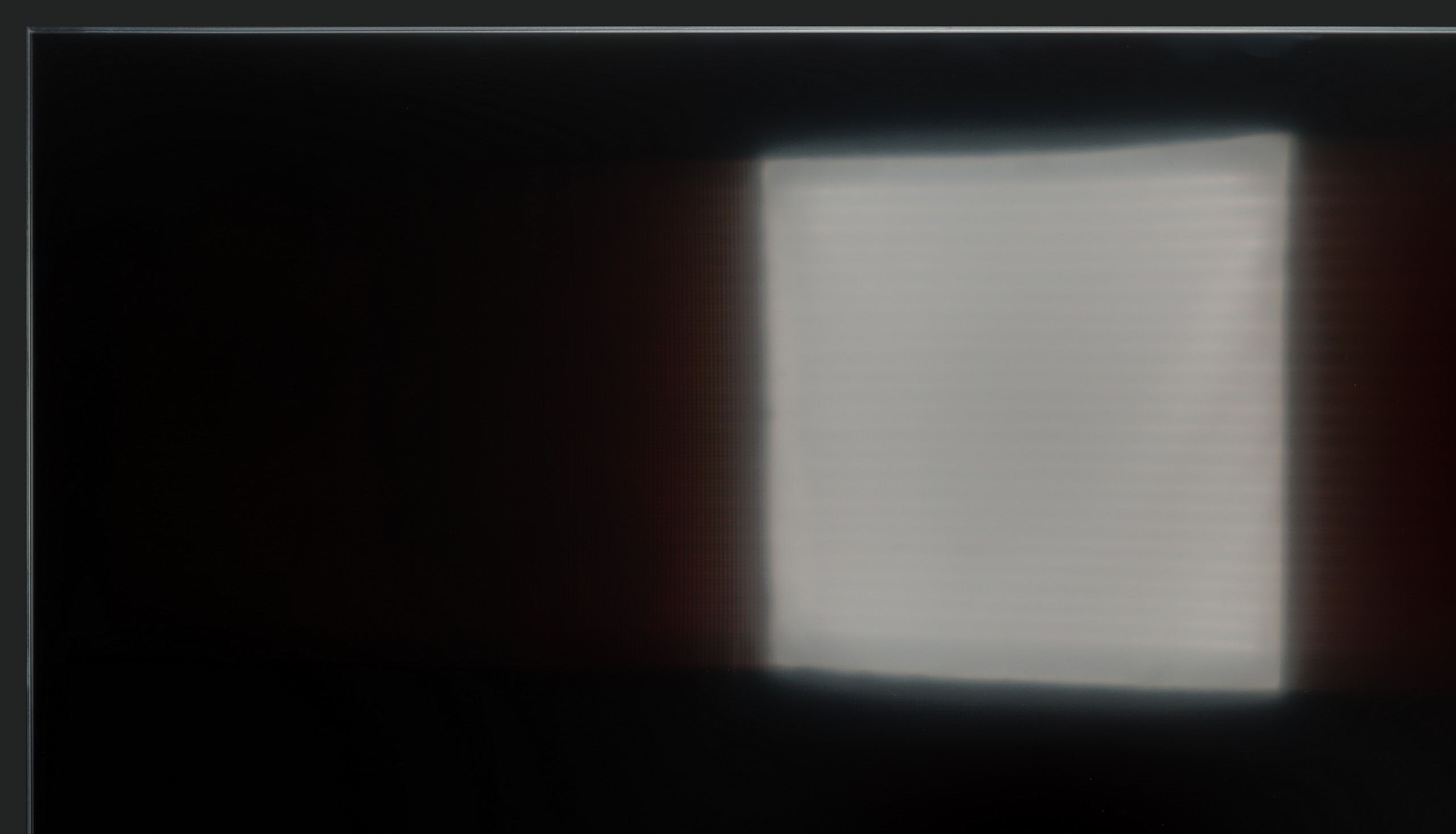


Matrix brightness
Average luminance SDR
TCL C6K: 532 cd/m2
Hisense U7NQ: 915 cd/m2
Hisense U7NQ is equipped with a matte coating panel that moderately suppresses reflections. Nevertheless, a brightness level of 915 cd/m² is impressive and ensures that the television performs very well even in bright rooms. With such high brightness, watching content during the day is not a problem, and the image remains clear and legible even with a large amount of external light.
TCL C6K performs quite well in bright lighting conditions. The panel offers decent brightness – in SDR content, it reaches around 550 nits, which allows for comfortable television viewing in an average living room, even on days with strong light coming through the windows. This means that daytime viewing does not require complete darkening of the room. It's also worth noting that the screen coating does a good job of reducing reflections, so the television doesn't turn into a "mirror" even in bright light. However, this is not the level of top models with more advanced anti-reflective coatings – in very challenging conditions, such as with large windows, reflections will be noticeable.
Details about the matrix
Subpixel Structure:

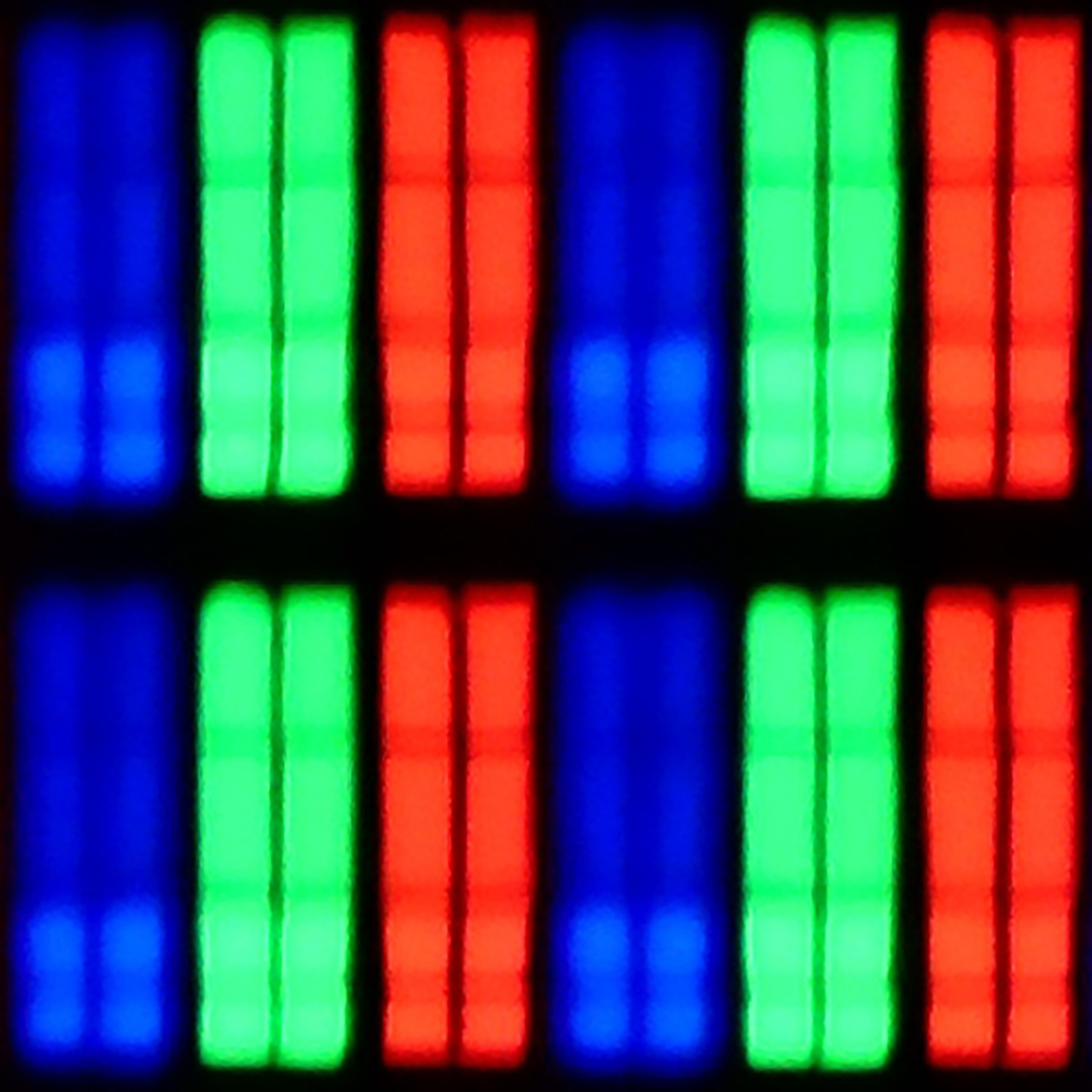
Panel uniformity:


Hisense U7NQ
TCL C6K
TV features
9/10
7/10
- HDMI inputs2 x HDMI 2.0, 2 x HDMI 2.1 48Gbps2 x HDMI 2.0, 2 x HDMI 2.1 48Gbps
- OutputsToslink (Optical audio), eARC (HDMI), ARC (HDMI), Mini-Jack (Headphones)Toslink (Optical audio), eARC (HDMI), ARC (HDMI)
- Network InterfacesWi-Fi 2.4GHz, Wi-Fi 5GHzWi-Fi 2.4GHz, Wi-Fi 5GHz, Ethernet (LAN) 100Mbps
- TV receptionDVB-T, DVB-T2, DVB-S, DVB-S2, DVB-CDVB-T, DVB-T2, DVB-S, DVB-S2, DVB-C
Classic features:
- Recording to USB (terrestrial TV)
- Recording programming
- Picture in Picture (PiP)
- RF remote control (no need to aim at the screen)
- Backlit remote control
- Teletext
- Audio only mode
- Possibility to connect Bluetooth headphones to the TV
- Possibility to simultaneously use Bluetooth headphones and the TV speaker
Smart features:
- AirPlay
- Screen mirroring (Windows Miracast)
- Wyszukiwanie głosowe
- Voice search in native language
- Ability to connect a keyboard and mouse


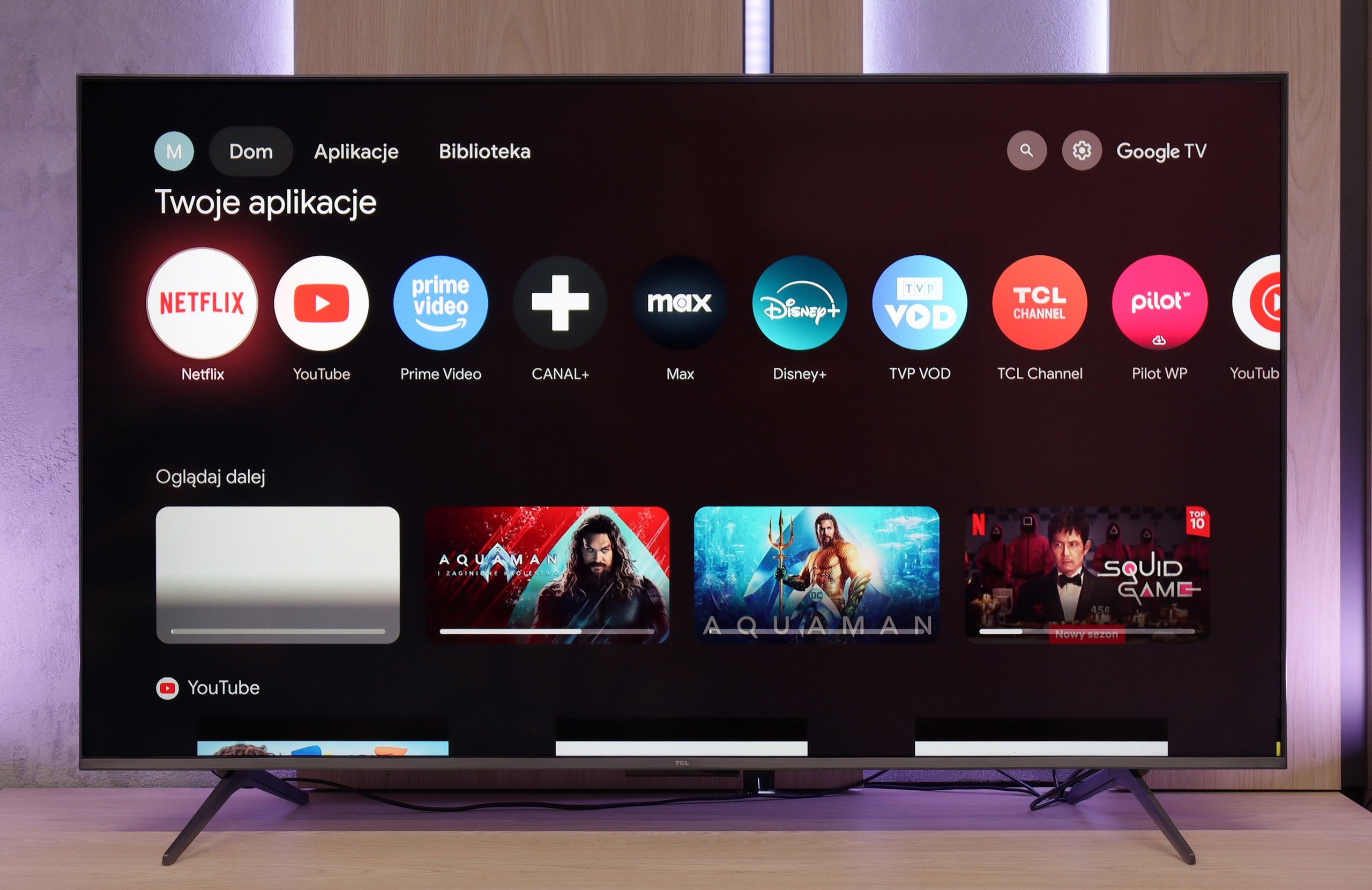
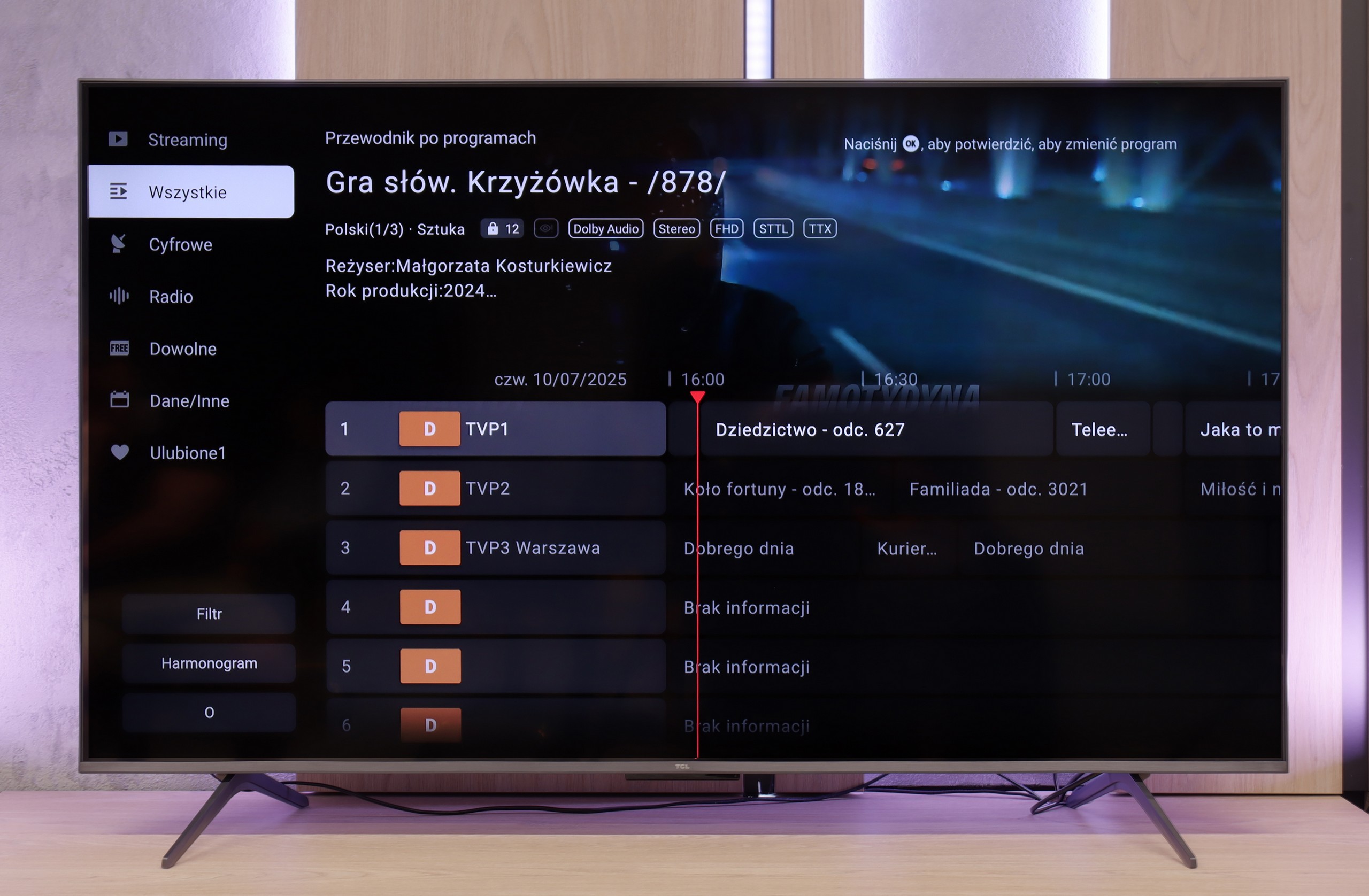
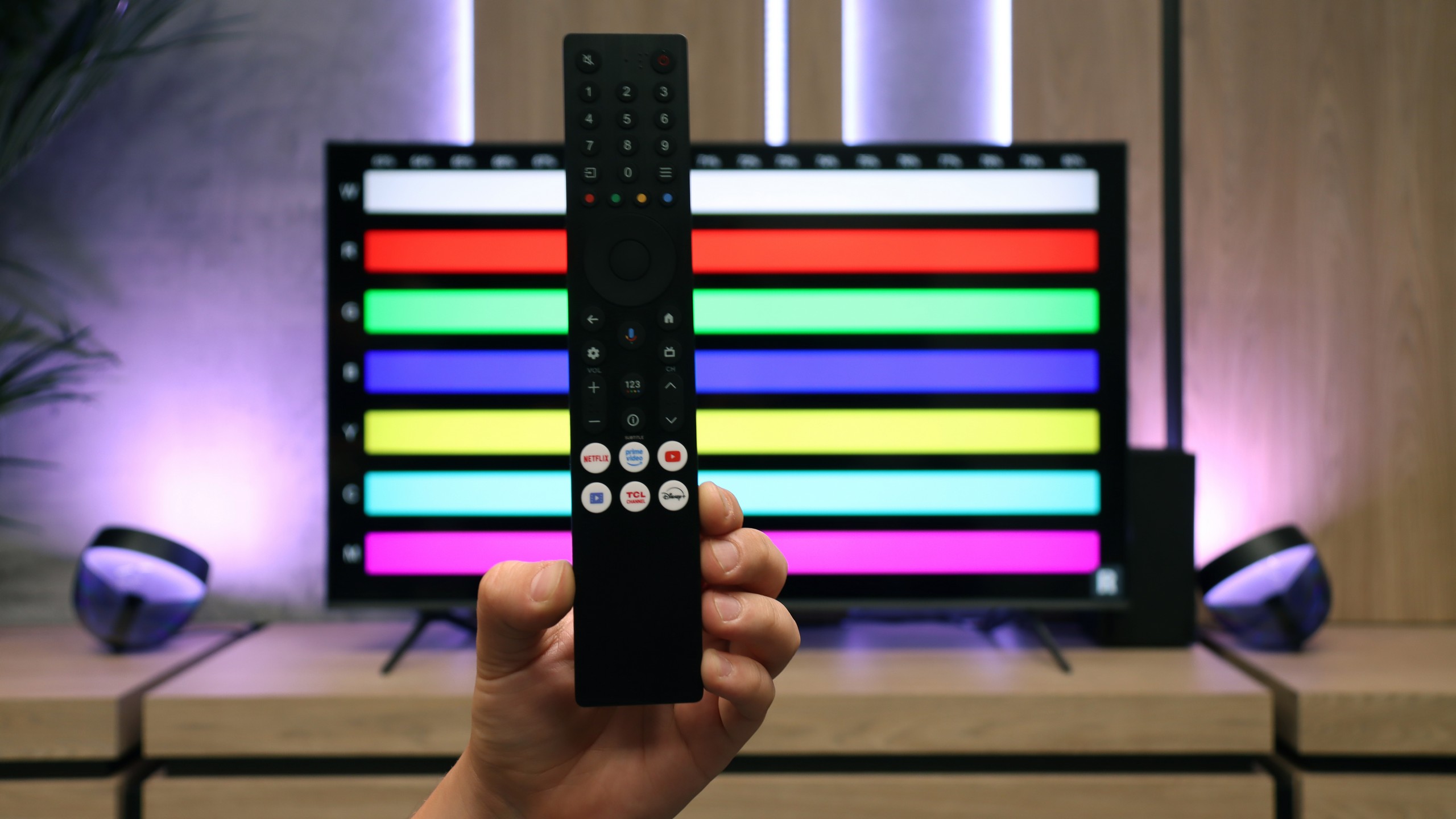
Hisense U7NQ uses the VIDAA operating system, which generally works quickly and smoothly, offering a user-friendly interface. There are plenty of applications available, but unfortunately, it lacks music apps like Spotify or Tidal. This is a limitation that may discourage users looking for a more developed app ecosystem.
The TV offers many useful user features that enhance its versatility. The ability to record programs, support for AirPlay, and Bluetooth for connecting various peripheral devices mean that the Hisense U7NQ can successfully serve as a central point for home entertainment.
Hisense U7NQ looks modern thanks to its narrow bezels and elegant single stand that pairs well with the rest of the device. However, the device itself is not among the sleekest on the market, especially compared to competing models from Korean manufacturers known for their exceptionally thin TVs. Despite this, Hisense U7NQ still offers an aesthetic and stylish design that will easily fit into most interiors.
Multimedia Features: Google TV
The strongest user aspect of the TCL C6K is undoubtedly the Google TV system. It gives the television character and provides it with an edge over many competitors. We have a full suite of services here – from support for popular streaming applications, to screen mirroring, all the way to AirPlay, which also makes iPhone users feel at home. In addition, there is Google Assistant (recently in the Gemini AI version), which not only answers questions but also performs simple commands efficiently, e.g., changing channels or searching for content on VOD services. The system itself works quite responsively, although it must be noted that there is a certain drawback – the awkward translations in the Polish menu can evoke a smile, but sometimes require a moment of thought to decipher what is really meant.
Classic Features
When it comes to classic television features, the TCL C6K is rather average. There is no USB recording or PiP mode, which may be disappointing for some. However, the manufacturer did not forget the basics – teletext TV and a clear EPG are available, which still matter to some users. In everyday use, the support for external audio devices via Bluetooth also comes in handy – a simple way to connect a speaker or headphones, which can be a practical solution for seniors. Beyond that, it is difficult to find elements that would distinguish the C6K from its competitors – it is simply a solid, but standard package of basic functions.
Playing files from USB
9/10
8.9/10
Supported photo formats:
Maximum photo resolution:

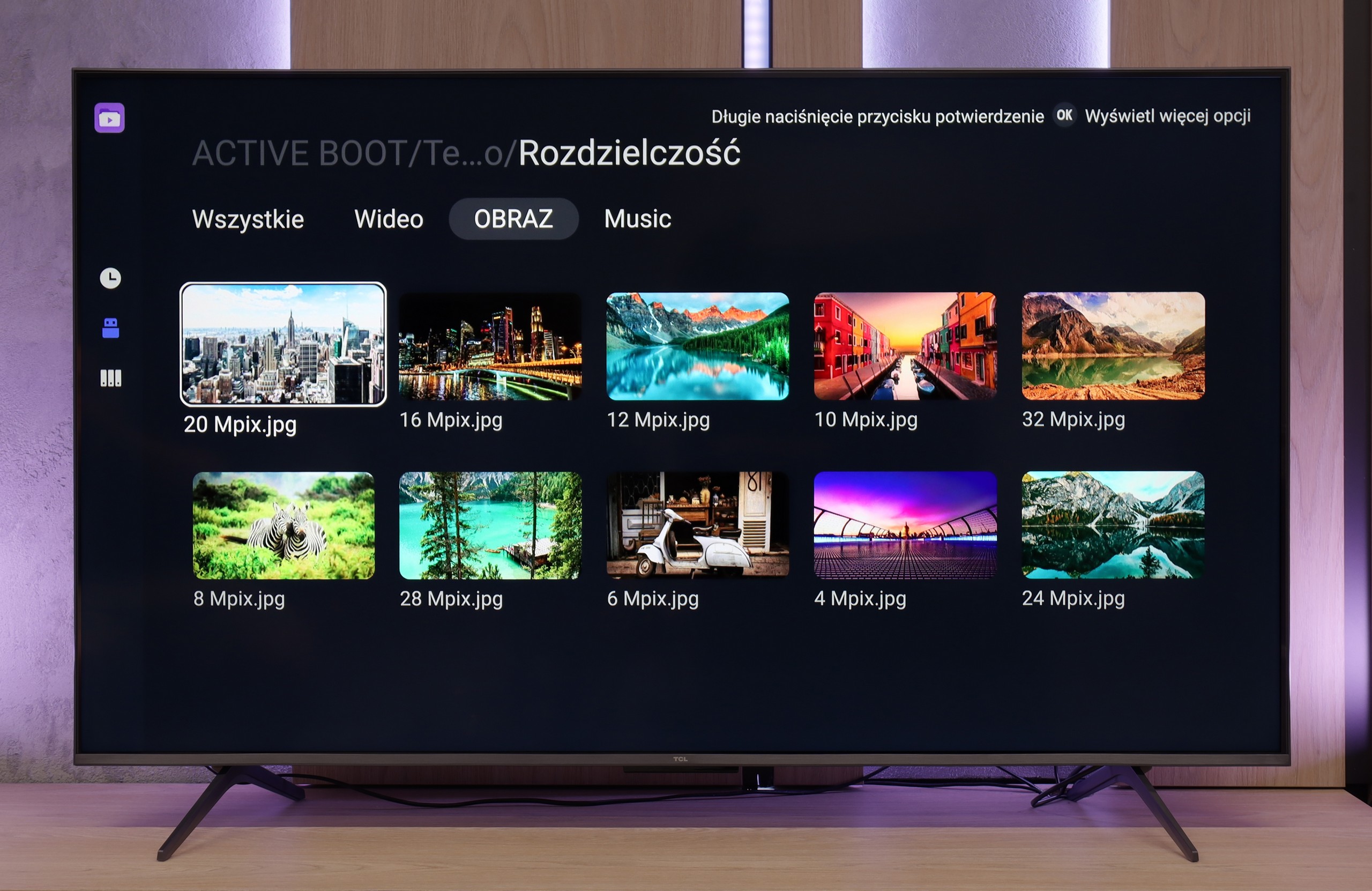
The built-in media player in the TCL C6K performs really well – practically all popular file formats work without major issues. There are, of course, minor exceptions, especially with less common codecs or atypical video file configurations, but in everyday use, this is rarely noticeable. The biggest advantage, however, is that the TV runs on Google TV, which provides full freedom in choosing additional software. If someone encounters a file that the standard player cannot handle, it is enough to install an alternative – such as VLC – and the problem disappears.
Apps
7.7/10
9.6/10














































Sound
6.9/10
6.5/10
- Subjective sound quality:6.9/106.5/10
- Dolby Digital Plus 7.1:
- Dolby True HD 7.1:
- Dolby Atmos in Dolby Digital Plus (JOC):
- Dolby Atmos in Dolby True HD:
- DTS:X in DTS-HD MA:
- DTS-HD Master Audio:
In terms of audio, the TCL C6K performs quite well. The manufacturer has been boasting about its collaboration with the Onkyo brand for several years, and it indeed reflects in the sound quality. The audio is pleasant, with clear mids and quite a clean high end, and the whole sound gives the impression of being well balanced. Of course, this will not replace a full-fledged soundbar, especially in terms of bass depth, but for built-in speakers in a TV from this price segment – it's really very good.


